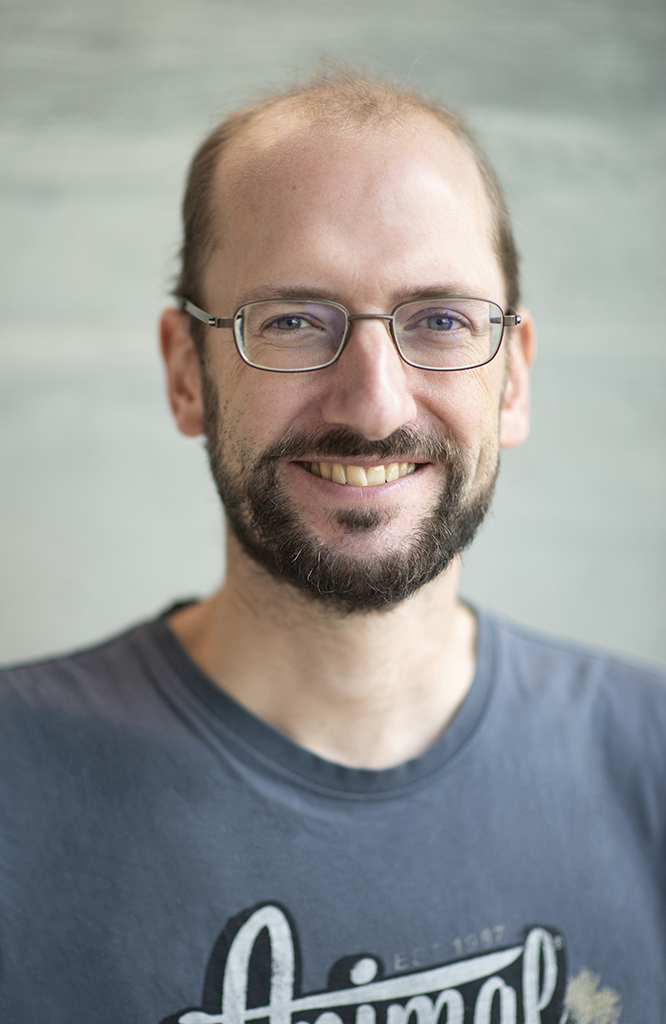Walther Hänseler
Walther obtained his PhD in Microbiology and Immunology from the University of Zurich, working with Prof. Reinhard Seger, Children’s Hospital Zurich. He tested tissue-specific lentiviral gene therapy for chronic granulomatous disease in mice and in patient-derived induced pluripotent stem cell (iPSC) models.
Walther was awarded an SNF Early Postdoc Mobility grant to work at the University of Oxford with Prof. William James and Dr. Sally Cowley, to elucidate the role of microglia in alpha-synuclein related loss of dopaminergic neurons in Parkinson's disease, using patient derived iPSCs. There he identified a phagocytosis defect in iPSC-derived macrophages of a SNCA-triplication Parkinson's patient and he developed an iPSC-derived microglia/neuron co-culture protocol as an authentic human neuroinflammation model. For his second postdoc Walther joined Prof. Lawrence Rajendran’s Lab, University of Zurich, to apply his iPSC co-culture model in Alzheimer’s Disease research.
In Paola’s lab. Walther is using his iPSC system for identification and modelling of neurodegenerative disease-associated changes in the proteome.
https://www.researchgate.net/profile/Walther_Haenseler
Publications
Brendel, C., Hanseler, W., Wohlgensinger, V., Bianchi, M., Tokmak, S., Chen-Wichmann, L., Kuzmenko, E., Cesarovic, N., Nicholls, F., Reichenbach, J., et al. Human miR223 promoter as a novel myelo-specific promoter for chronic granulomatous disease gene therapy. Hum Gene Ther Methods 24, 151-159 (2013).
Flynn, R., Grundmann, A., Renz, P., Hanseler, W., James, W.S., Cowley, S.A., and Moore, M.D. CRISPR-mediated genotypic and phenotypic correction of a chronic granulomatous disease mutation in human iPS cells. Exp Hematol 43, 838-848 e833, (2015).
Haenseler, W., Kuzmenko, E., Smalls-Mantey, A., Browne, C., Seger, R., James, W.S., Cowley, S.A., Reichenbach, J., and Siler, U. Lentiviral gene therapy vector with UCOE stably restores function in iPSC-derived neutrophils of a CGD patient. Matters (2018).
Haenseler, W., and Rajendran, L. Concise Review: Modeling Neurodegenerative Diseases with Human Pluripotent Stem Cell-Derived Microglia. Stem cells 37, 724-730 (2019).
Haenseler, W., Sansom, S.N., Buchrieser, J., Newey, S.E., Moore, C.S., Nicholls, F.J., Chintawar, S., Schnell, C., Antel, J.P., Allen, N.D., et al. A Highly Efficient Human Pluripotent Stem Cell Microglia Model Displays a Neuronal-Co-culture-Specific Expression Profile and Inflammatory Response. Stem Cell Reports 8, 1727-1742 (2017).
Haenseler, W., Zambon, F., Lee, H., Vowles, J., Rinaldi, F., Duggal, G., Houlden, H., Gwinn, K., Wray, S., Luk, K.C., et al. Excess alpha-synuclein compromises phagocytosis in iPSC-derived macrophages. Sci Rep 7, 9003 (2017).
Zambon, F., Ryan, B.J., Webber, C., Lang, C., Booth, H.D.E., Fernandes, H.J.R., Cherubini, M., Bengoa-Vergniory, N., Vingill, S., Wade-Martins, R., et al. Cellular α-synuclein pathology is associated with bioenergetic dysfunction in Parkinson’s iPSC-derived dopamine neurons. Hum. Mol. Gen 28, 12 (2019).
